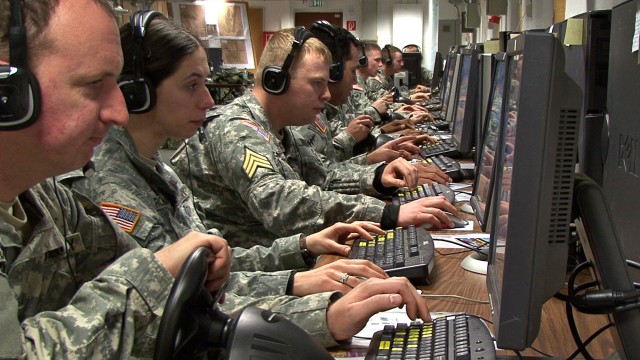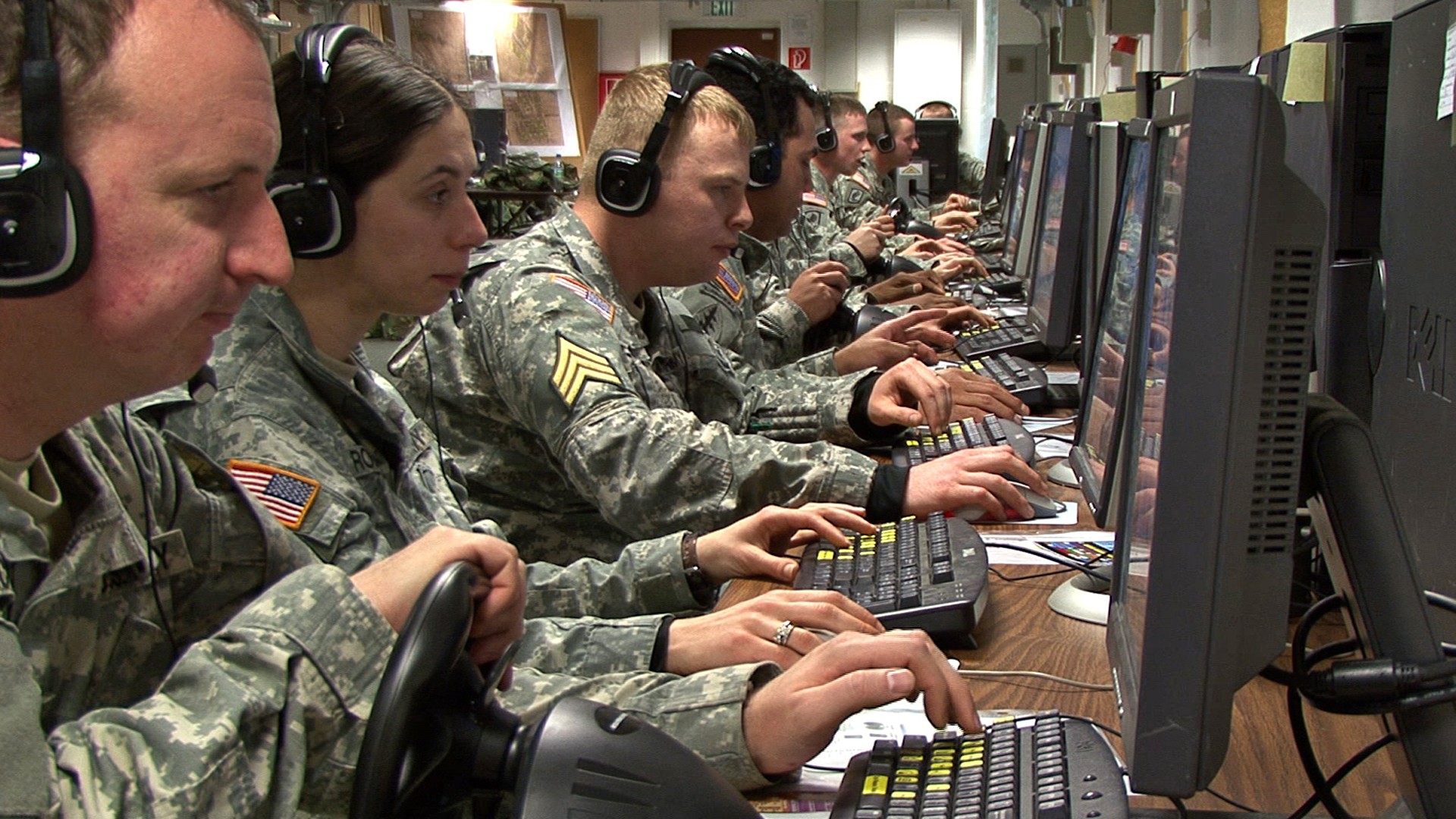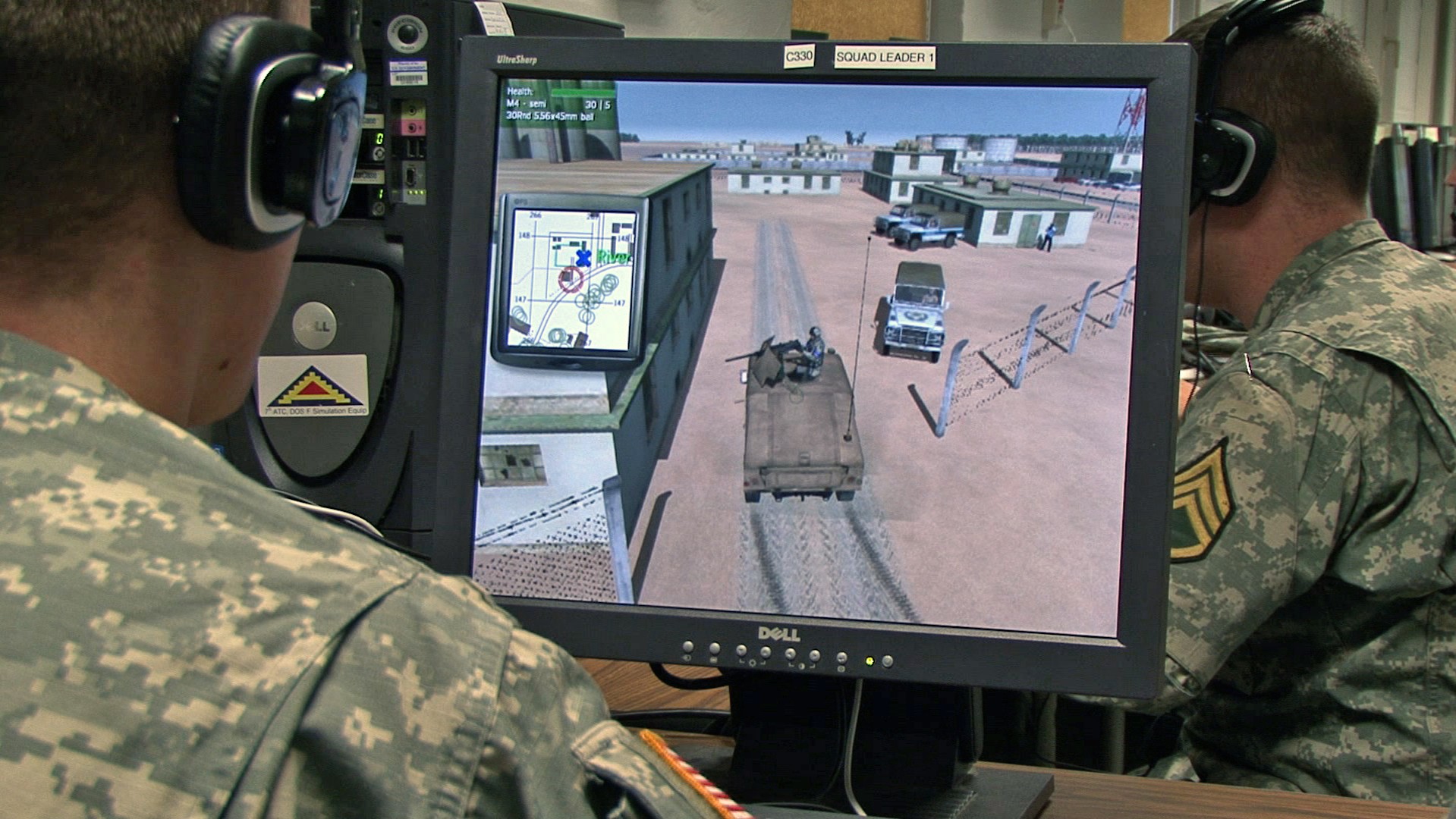Sgt. Eric Anderson's squad is in a tight spot. His convoy of HMMWVs has been ambushed by snipers in a small village in Iraq and two of his men are down.
His radio is buzzing with chatter.
"Any vehicle, get to the front of this freaking compound and pick up the guy," he shouts into his headset. He tries to get back into his vehicle, but the shrapnel that has torn into his leg won't let him stand up.
Anderson knows that it's his job to get his squad to safety, but it's not going to be easy. Anderson has never led soldiers before. This is his first mission in charge. He shakes his head in frustration and continues to issue halting orders over the radio.
Suddenly everything goes black.
"Alright, sergeants. Take your hands off the keyboards and take your headsets off," shouts a senior sergeant, who has suddenly appeared over Anderson's shoulder.
Voices that had been chattering nervously just moments before now turn to laughter as squad member s shuffle past Anderson's computer terminal.
1st Squad, Bravo Company has just completed Day 16 of the 7th United States Army Non-Commissioned Officers' Academy's (NCOA) Warrior Leader Course (WLC) in Grafenwoehr, Germany.
Although the NCOA is the oldest of its kind, its location at the Grafenwoehr Training Area gives students access to some of the most modern and advanced training techniques and facilities in the Army. The WLC not only gives its students the opportunity to discover their leadership potential on the largest live-fire training area outside the continental United States, but also the chance to hone their skills in virtual environments provided by the neighboring Joint Multinational Simulations Center.
The Army has employed computer simulations to train Soldiers for quite some time. New software has improved the usability and usefulness of training Soldiers in a variety of ways. The 7th Army NCO Academy incorporates Virtual Battlespace Systems, or VBS 2 - one of the Army's newest training software simulations -- to replicate realistic scenarios that the junior Soldiers are likely to encounter as NCOs in Iraq or Afghanistan. Staff Sgt. Harold Streat, a 7th Army NCOA Instructor, likes to think of the simulation days as a kind of mid-term examination for WLC students.
"We want to create an environment that allows the students to put to work, or put into practice those concepts that we teach them in the classroom during the first two weeks of the course," says Streat.
The WLC students are split into two squads of about 15 soldiers each. Each squad member sits in front of one of the computer terminals lining the walls of the classroom. After a brief tutorial on how to control the simulation and use the radio headsets, the squad heads out on its first virtual mission.
Although the facilitators have instructed the soldiers to communicate only through the headsets, the room is a buzz with noise. Sgt. Anderson, who is in charge of 1st Squad, has a difficult time getting his squad's attention. At times he forgets to use the radio headset, and simply shouts instructions across the room.
"It was a learning experience," says Anderson. "I didn't have as much control as I thought I was going to have."
Many of the soldiers in the Warrior Leader Course have been deployed to Iraq or Afghanistan, and some have taken part in the real-life missions on which the VBS 2 scenarios are based. But instructors say there is a big difference being part of team and leading a team, even if the Soldier is directing troops with a keyboard and a mouse.
"What we want to see as leaders is how well the Soldier is able to manage a stressful situation, delegate responsibility and authority, and how effectively he or she communicates," says Streat.
Instructors challenge the students to determine each soldier's strengths and weaknesses as a leader, and then work with them to develop their leadership skills.
The simulations are just a part of the month-long Warrior Leader Course, which combines physical, academic and practical exercises to prepare junior soldiers for their roles as Noncommissioned Officers in the Army.
"At my unit," says Sgt. Anderson, "I'm an NCO, but I'm not in charge of anyone. But here, I am in charge, and I can build myself here, so that when I go back to my unit, and I am in charge of somebody, I'll be prepared."




Social Sharing